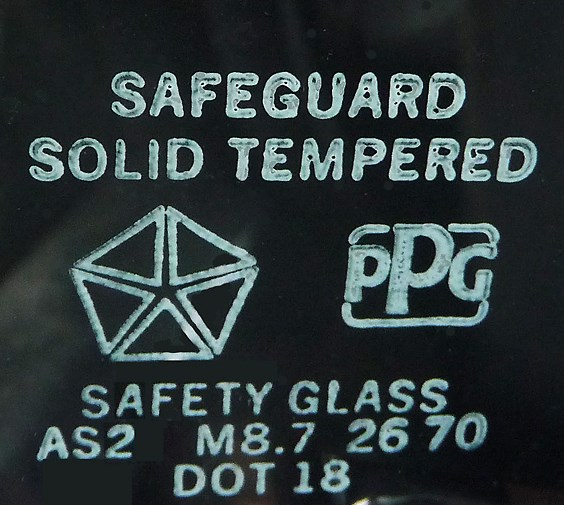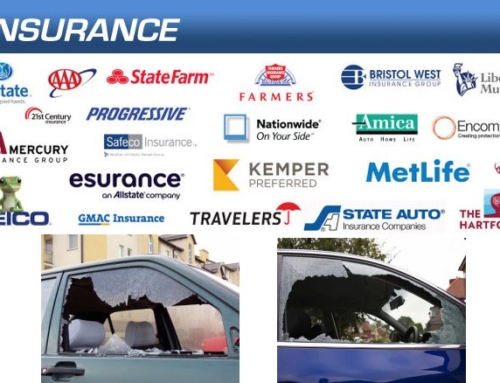From the outside, automotive glass looks just the same as any other kind of glass. But on the inside, where it counts, auto glass is very different from other glass. The windows in your vehicle are made of two types of glass: tempered and laminated.
About Tempered Glass
The side and rear windows of cars and pickup trucks are made of tempered glass. Tempered glass starts its life as a normal piece of glass — and like any other regular piece of glass, it’s not terribly strong, and has a tendency to break into dangerous shards when subjected to severe pressure or impact. In fact, window glass was responsible for serious and disfiguring injuries in the early days of the automobile.
The process of tempering glass was developed to address these problems. In this process, sheets of glass are heated in a furnace to extremely high temperatures — 600 degrees or more. Then the glass is cooled down rapidly with blasts of cool air. As the glass cools, it contracts.
This contraction is what makes the glass tougher and more resistant to heat, cold, and impact. It also gives tempered glass its unique characteristic of breaking into dull-edged chunks instead of pointed shards. When a tempered glass window breaks, it can’t be repaired, but can only be replaced.
About Laminated Glass
The front windshield of your vehicle provides structural support as well as protection for the people inside. This is why tempered glass just isn’t good enough for windshields. Your vehicle’s windshield is actually a kind of sandwich, with a thin layer of film surrounded by two sheets of glass — it’s what we call laminated glass.
The film in the middle of the sandwich is a special type of vinyl called polyvinyl butyral, or PVB. It’s placed between two sheets of glass, and the whole sandwich is sealed with rollers and then heated to complete the seal. The bonding process makes the glass especially resistant to impact, and even when it’s cracked or broken, it doesn’t shatter.
This resistance to shattering is what makes it possible to repair a cracked windshield. When we repair a windshield that’s been chipped or cracked, we use strong suction to remove all the air that’s accumulated in the inner layer. This creates a vacuum effect within the layers of glass. The chip or crack is then filled with a clear resin that’s drawn into the glass via the vacuum.
As the space fills with resin, we use pressure to ensure an even, complete saturation. The final step is to cure the resin until it’s solid. When the job is finished, the damaged area is completely welded together. The whole process generally takes 30 minutes or less, and at the end you’ve got a safe, structurally sound windshield once again.



 North: (512) 339-0555
North: (512) 339-0555
